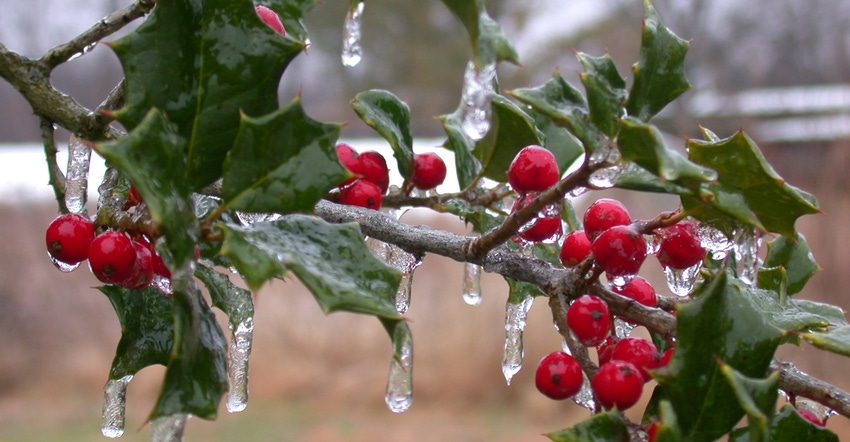November 23, 2021

It takes imperfect flowers to grow winterberry or holly berries.
There are many native species with imperfect flowers — meaning flowers that contain only male or only female reproductive parts. Several native plants have imperfect flowers on the same plant. Dioecious plant species, which include holly, are those with imperfect flowers on separate plants.
With dioecious plants, you need at least one male and one female plant to produce fruits and seed. For farmers, gardeners and birds who depend on berries produced by dioecious plants, this is important. Male plants will never produce fruits or seeds.
One might think that seeds of dioecious plants produce equal numbers of male and female seedlings. Unfortunately, this is not always the case. Our Missouri ecotype winterberry and American holly produce far more male seedlings then female seedlings. This does not bode well for homeowners who want bright, red holly berries for wreath-making and feeding birds.
How to get hollies
So how do consumers acquire female, berry-producing holly plants if most of the seedlings available are male? Fortunately, this species is prone to suckering, divides well and can be grown from cuttings.
At Shaw Nature Reserve, we have been dividing female winterberry hollies to increase their numbers. We plant one male winterberry holly for every five females to get good pollination and fruit production.
For deciduous and American hollies, we plant seedlings in nursery rows, and then wait until they flower and fruit. We then select the female plants for use in landscaping (remembering to use one male seedling for every five females). This process is time-consuming and requires hand-digging large plants, a backbreaking, time-consuming and expensive method.
If gardeners are to succeed with berry-producing female hollies, the easiest method available is through vegetative propagation (stem cuttings or division). How do gardeners buy vegetatively propagated native hollies?
The simple answer is that they are available as cultivars. This is the main reason why holly is grown and marketed as cultivars. The other reason is to offer plants with reduced size that fit in small gardens.
Other berry producers
Cultivars of eastern red cedar, bittersweet, honey locust and persimmon are also produced for various reasons. Cedar cultivars were selected for consistent berry production and smaller sizes. A selection of American bittersweet is marketed because it has perfect flowers.
Male honey locust cultivars were selected to reduce the mess of fallen fruits. And persimmon cultivars were selected with larger, more productive fruits with fewer seeds.
With willow, fringe tree, spice bush, bittersweet, goats beard and wild strawberry, seedlings produce about equal quantities of male and female plants, so it is more reasonable to acquire these as seedling-grown plants. The Missouri Department of Conservation sells native tree and shrub seedlings. They come in bundles of 100, 25 or 10 and range in price from 50 cents to $1 per seedling.
There is still some chance involved, so plant several seedlings (five minimum) in small groupings to be sure to get at least one male and one female. Nothing worthwhile ever comes easy, especially the best things in life. Happy gardening!
Woodbury is a horticulturalist and curator of the Whitmire Wildflower Garden at Shaw Nature Reserve in Gray Summit, Mo., where he is an adviser to the Missouri Prairie Foundation’s Grow Native! program.
About the Author(s)
You May Also Like




